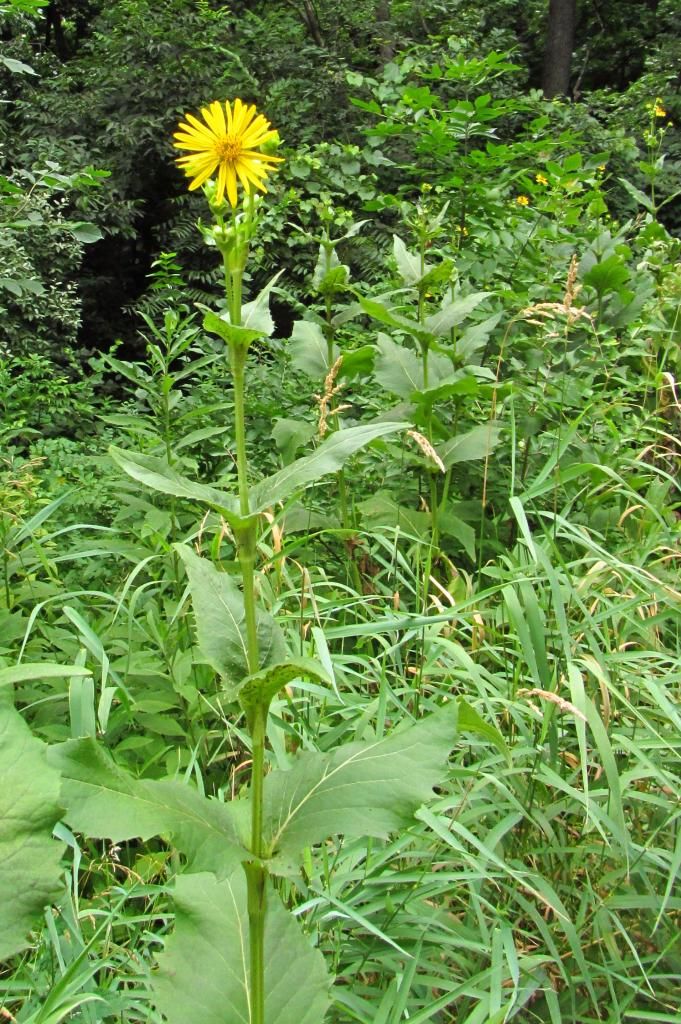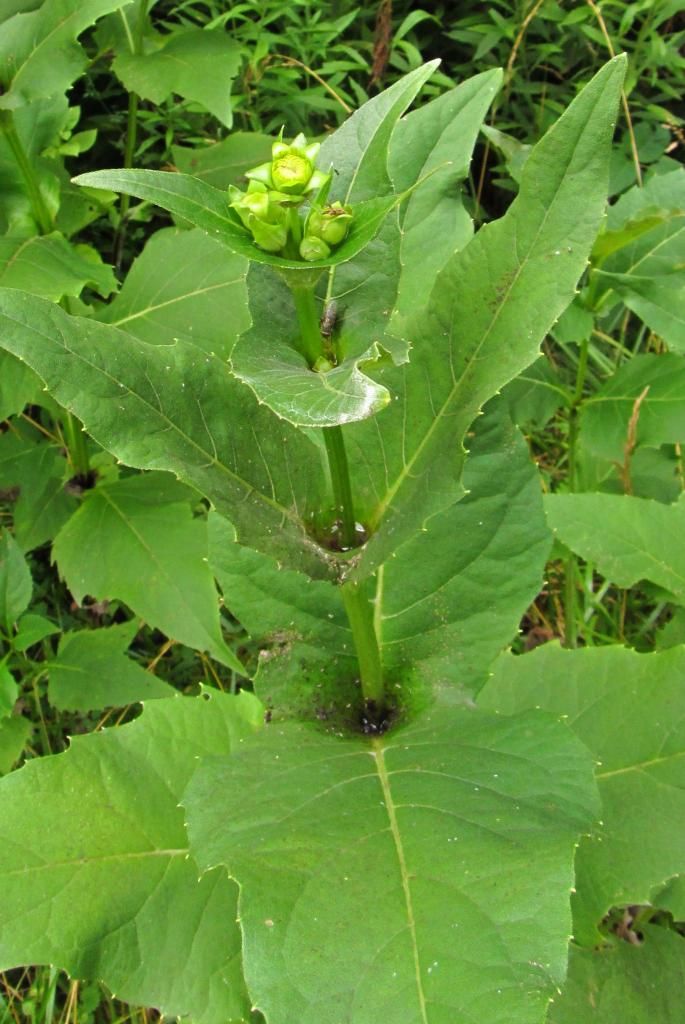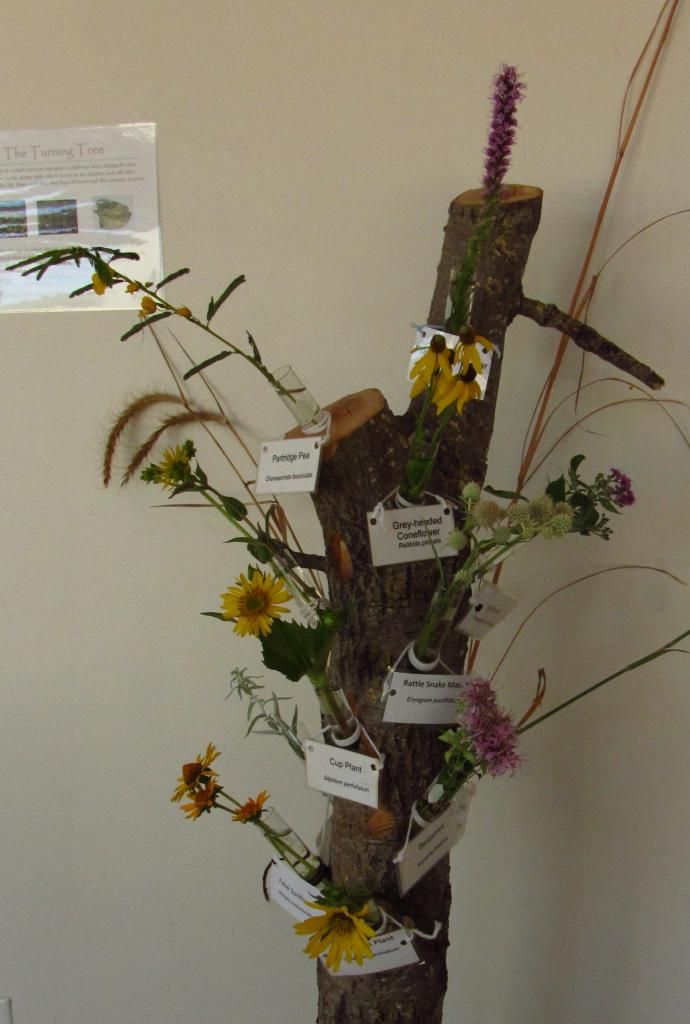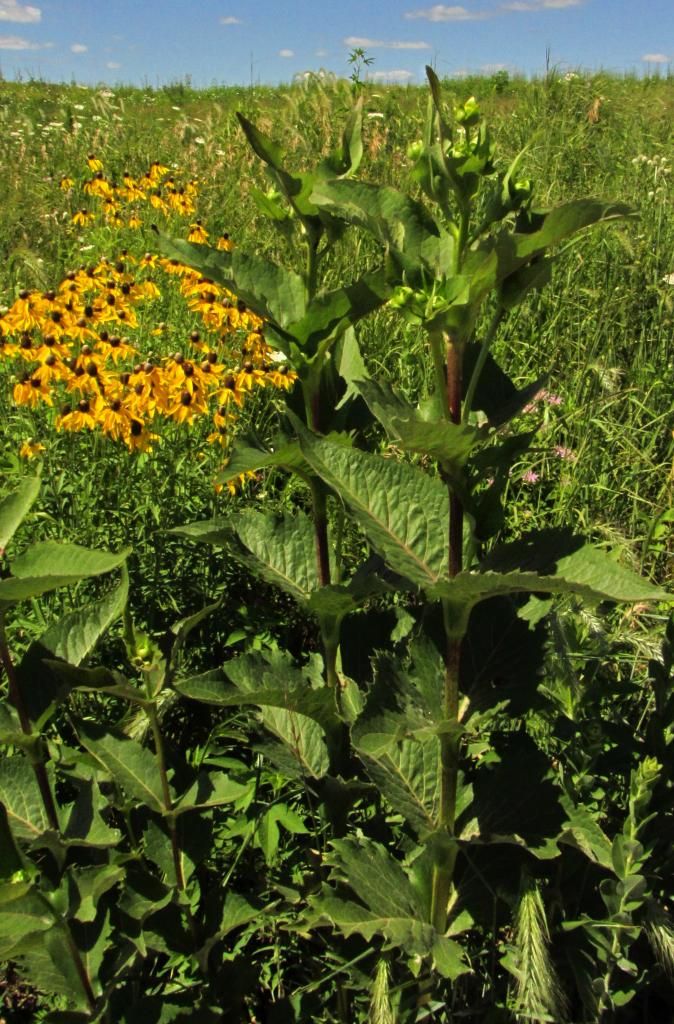This week’s featured wildflower is particularly valuable for insects and birds in prairie habitats, because its leaves hold small pools of water, even long after the flowers are gone. Cup plant (Silphium perfoliatum) is blooming now in central Iowa. I’ve enclosed several pictures of this striking yellow flower after the jump.
I highly recommend a visit to the Neal Smith National Wildlife Refuge near Prairie City (Jasper County) at this time of year. Dozens of prairie plants are flowering. It’s a perfect half-day trip.
This is an open thread: all topics welcome.
Cup plant is native to most of eastern North America and the great plains states. Like other members of the aster family, it has composite flower heads. What appear to be petals are ray flowers, and there are many tiny flowerets on the center disk. Cup plant blooms typically have between 20 and 30 ray flowers, and the center disks are a darker shade of yellow. The plant’s common name comes from a feature below the blossoms. As the Lady Bird Johnson Wildflower Center describes it,
Stout leaves are joined at stem to form a small cup that holds water and attracts birds.
I first learned to spot cup plants on the restored tallgrass prairie at the Neal Smith National Wildlife Refuge last year. But recently I was surprised to discover a stand of these prairie plants in a wooded area along the Windsor Heights bike trail, near North Walnut Creek.
Here’s a closer view of a cup plant that hasn’t bloomed yet. You can see an insect crawling down into the cup where water collects.
Over the weekend, I went back to the Neal Smith refuge. I recommend stopping in the Prairie Learning Center before exploring the trails. Near the front entrance of the building, staff put clippings from plants in bloom on a tree, with each flower labeled. So helpful!
Sure enough, you don’t have to step far away from the Prairie Learning Center to find cup plants blooming.
The flower heads on these cup plants haven’t opened up yet, but check out the colony of gray-headed coneflowers just behind them.
Finally, here’s a trio of summer yellow wildflowers at the Neal Smith center. Cup plants are in the foreground, gray-headed coneflowers are just behind them, and the very tall plant is a compass plant in bloom. Compass plant (Silphium laciniatum) is related to cup plant, and according to Wildflowers of the Tallgrass Prairie by Sylvan Runkel and Dean Roosa, both plants develop a “gummy material along the upper third of the main stem” that was a traditional chewing gum. The gum from cup plant was thought to help prevent vomiting.







1 Comment
Cup plants are great
Cup plants would be a good choice for a backyard pollinator garden if the gardener likes tall robust non-dainty plants that don’t need coddling. Cup plant grows easily from seed, and the flowers attract butterflies and various bees and other insects. And the seeds are loved by goldfinches. Also, cup plants can generally tolerate a little shade, unlike some other prairie plants.
PrairieFan Thu 27 Apr 1:41 PM